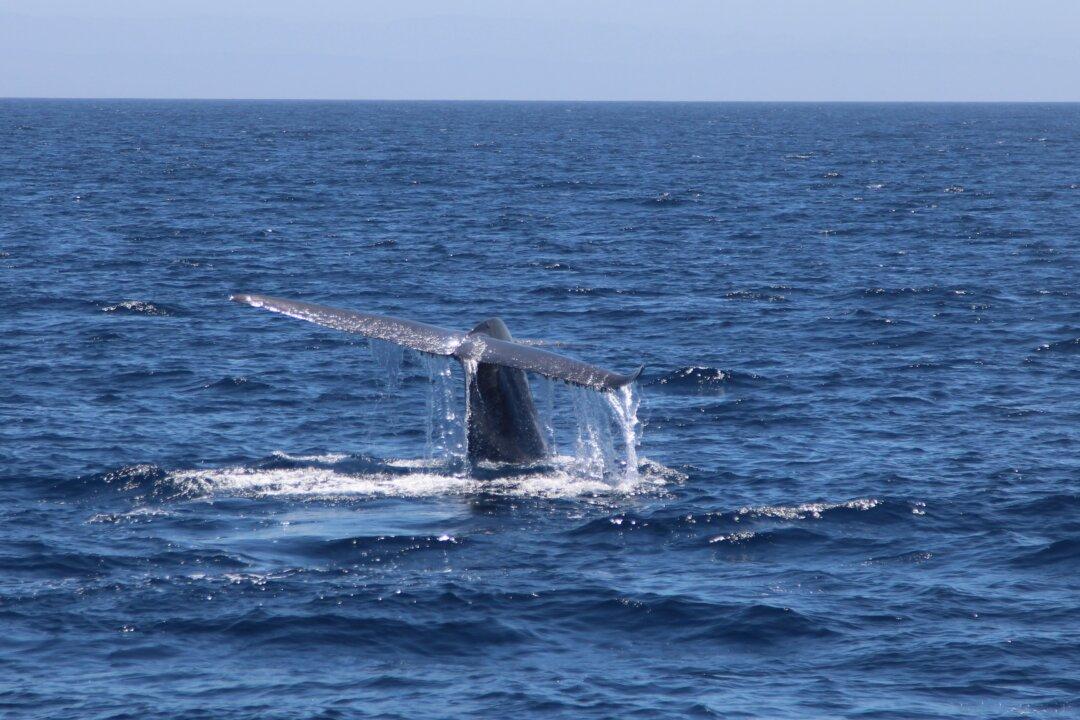LONG BEACH, CALIF.—Southern California has seen a surge in whales recently, most notably a tropical whale called Bryde’s whale. It has been spotted off the coast of Long Beach in the last few days, a rare sight so far north.
Bryde’s whales normally swim in 61-72° water and do not go farther north than the waters around Mexico. However there have been twelve individual Bryde’s whale sightings recently off the coasts of Washington, Oregon, and California.
“Animals that come to an area that aren’t normally in that area usually are after one main thing: food,” said Kera Mathes, a whale biologist at the Aquarium of the Pacific in Long Beach.
Mathes said tuna have also been seen off the coast of Southern California, which is another warm water marine animal not typically seen in those waters.
“So if water conditions are changing—for example there’s a predicted El Niño year, which is going to bring warmer water— that could be one of the reasons we’re seeing this more tropical or subtropical whale up in our waters.”
Bryde’s whales measure between 40 and 55 feet long and can weigh up to 90,000 pounds. They eat over 1,000 lbs. a day, mostly plankton, crustaceans, and schooling fish like sardines and mackerel.
They look very similar to the fin whale, and mistaken identities could be another reason why, compared to other whale species, so few Bryde’s whales have been spotted.
Bryde’s whales have three ridges near the blowhole, as opposed to the single ridge of the fin whale. They are also smaller than Sei whales, another species with which they are commonly confused.
Surge in Whales, Surge in Accidents
Along with the Bryde’s whales, record numbers of gray whales have been spotted in southern California during their winter season, and a lot of blue whales have been seen during their summer season.
Near the Los Angeles and Long Beach ports, which are highly trafficked by large boats, many of these whales have been spotted, and a few of them hit.
“There have been large whales such as the blue whales and the fin whales that have been hit by ships,” said Mathes.
The Aquarium of the Pacific collects research data about whales in Long Beach for the Cascadia Research Collective, especially on whales that have been hit by ships.
A 15-year study by Oregon State University’s Marine Mammal Institute tracked blue whales off the west coast of the Americas using satellites. The study concluded whale-ship collisions could be one reason why blue whale numbers have remained low despite expectations they would increase.
Blue whales, which are endangered, have a population of about 10,000. There are an estimated 2,300 off the coast of California.
The International Whaling Commission banned commercial hunting of blue whales in 1966, and neither commercial nor aboriginal subsistence hunting is allowed now.





